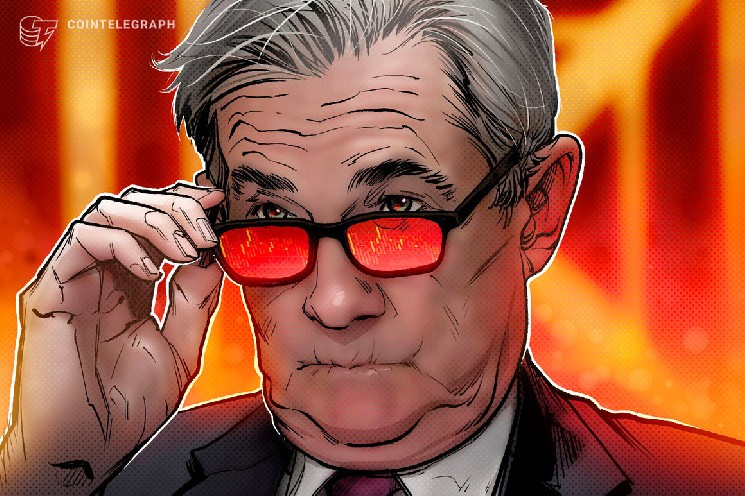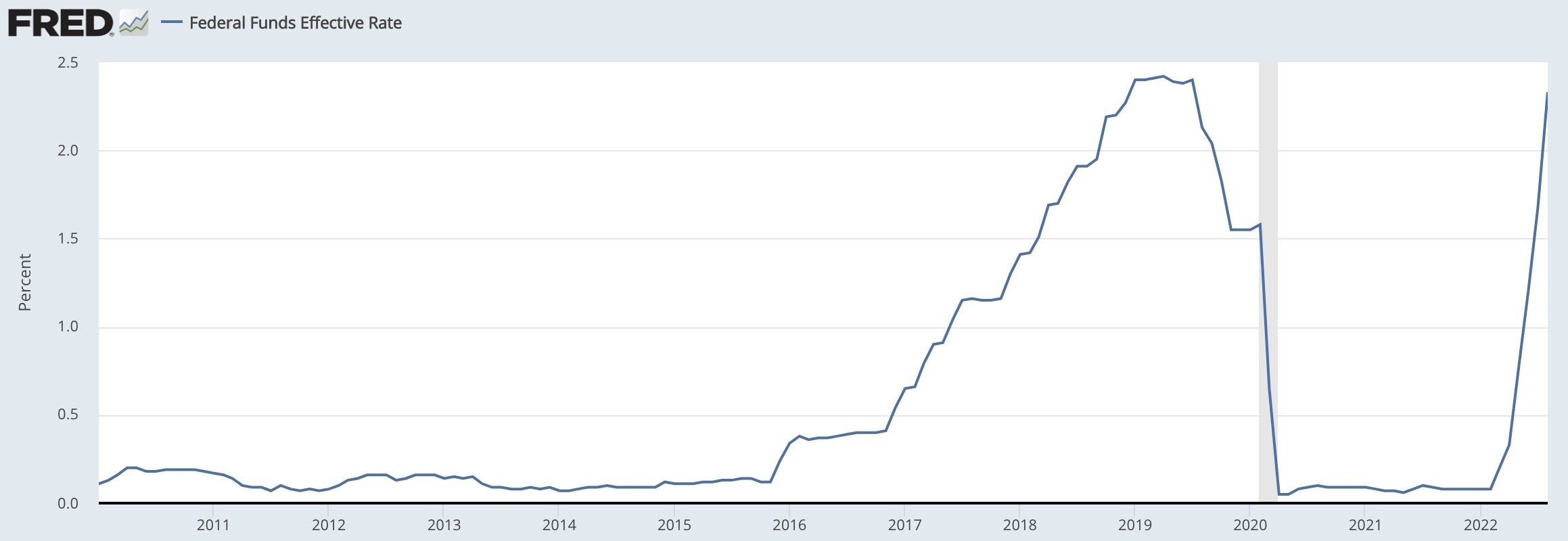Jerome Powell is prolonging our economic agony

Can we all agree that the Federal Reserve has a plan to combat runaway inflation? They do. Chair Jerome Powell has all but admitted it. After tempering his comments before previous rate hikes, allowing wiggle room which gave way to market rebounds, Powell has left no bones about this one. It is necessary to wreak some havoc on the economy and put downward pressure on the labor markets and wage increases to stop the creep of inflation. Whether you buy into that logic or if you believe — like Elon Musk — that such movements could result in deflation — doesn’t matter.
All that matters is what those voting on the rate hikes believe, and there’s plenty of evidence that they won’t stop until the rate is over 4%. Wednesday’s rate increase of 75 basis points only moves us in that direction. This is the third such adjustment of 75 basis points, and we’ve been all but told that it wouldn’t be the last. While these rate hikes have been historical, they prolong the economic pain associated with them. It’s time for the Fed to be brutally honest about where the economy is and where it is heading.
Jerome Powell has said that he aims to give the economy a soft landing. However, he’s also said, “Our responsibility to deliver price stability is unconditional.”
Except that the soft landing he’d like to attain is something from a science fiction novel. It is something that those following the situation don’t believe. Former Federal Reserve Bank of New York President William Dudley admitted as much, saying, “They’re going to try to avoid recession. They’re going to try to achieve a soft landing. The problem is that the room to do that is virtually non-existent at this point.”
Related: The market isn’t surging anytime soon — so get used to dark times
Cleveland Federal Reserve Bank President Loretta Mester, one of the 12 who voted on the rate hike, has joined Powell, stating that the Fed will need to raise the rate to over 4% and hold it there. Only one question remains, and it isn’t where the interest rate will end up. The question: Why does the Fed insist on dragging out the pain?
There’s no question that a rate hike of 150 basis points would genuinely shake up the market. So, too, does a 75-basis point hike with a promise of more to come. There’s an advantage to taking the plunge all at one time. Done once, Powell could’ve come out and clearly articulated a path forward. He could have assured Wall Street, citizens and trading partners across the globe that the 150-basis point hike is the magic bullet needed to bring down inflation and that any other movement would be of inches rather than miles. Instead, Powell noted at his Wednesday press conference that an additional 100 or 125 basis points in increases would be required by the end of the year.

Federal Funds Effective Rate from 2010 through August 2022. Source: Federal Reserve Bank of St. Louis
As with most changes, clear communication is the most important element to get buy-in. Right now, traders feel betrayed. In the beginning, Fed forecasts indicated that a 75-point hike was historic and unlikely to be replicated. Yet, inflation persists. In the long run, an honest approach would create more upheaval on the front end, allowing the healing to begin much faster.
A Brookings Institution study, Understanding U.S. Inflation During the COVID Era, reached an unsurprising conclusion: The Fed “likely will need to push unemployment far higher than its 4.1 percent projection if it is to succeed in bringing inflation down to its 2 percent target by the end of 2024.”
The Fed has kept interest rates at historic lows for over a decade. Investors, companies and society have begun operating as if near-zero rates would serve as the norm. Understandably, this rapid departure from the norm has rattled markets. And implications extend far beyond the markets. The implications such increases have for the national debt are even more excruciating.
Related: What will drive crypto’s likely 2024 bull run?
However, the increases are coming. There’s no question about that. To continue the charade that 75 basis points, and some number of similar additional increases, is somehow more palatable because the markets don’t feel it all at one time is sheer poppycock. The markets, as well as investors, deserve to know the truth. Equally importantly, society deserves to begin the path to recovery. We could’ve started this morning. Instead, it will be in the months to come.
As it relates to cryptocurrency, the rate hike shouldn’t change the trend compared to traditional assets. Any hit to the market will affect digital and traditional assets alike. For another bull market to emerge, regulatory reform will be required. That won’t happen until at least next year. The sooner the Fed reaches its magic number, the faster that economic healing will start. In that way, the crypto community should favor an expedited timeline. Rip the band-aid off and allow healing to begin while regulatory guidelines are negotiated. Then, crypto will be in a position where it may again blossom.
Richard Gardner is the CEO of Modulus, which builds technology for institutions that include NASA, Nasdaq, Goldman Sachs, Merrill Lynch, JP Morgan Chase, Bank of America, Barclays, Siemens, Shell, Microsoft, Cornell University and the University of Chicago.
This article is for general information purposes and is not intended to be and should not be taken as legal or investment advice. The views, thoughts, and opinions expressed here are the author’s alone and do not necessarily reflect or represent the views and opinions of Cointelegraph.






 Bitcoin
Bitcoin  Ethereum
Ethereum  Tether
Tether  USDC
USDC  TRON
TRON  Dogecoin
Dogecoin  Cardano
Cardano  Bitcoin Cash
Bitcoin Cash  Chainlink
Chainlink  LEO Token
LEO Token  Zcash
Zcash  Monero
Monero  Stellar
Stellar  Litecoin
Litecoin  Hedera
Hedera  Dai
Dai  Cronos
Cronos  OKB
OKB  Tether Gold
Tether Gold  Ethereum Classic
Ethereum Classic  KuCoin
KuCoin  Gate
Gate  Algorand
Algorand  Cosmos Hub
Cosmos Hub  VeChain
VeChain  Tezos
Tezos  Dash
Dash  Stacks
Stacks  TrueUSD
TrueUSD  IOTA
IOTA  Basic Attention
Basic Attention  Decred
Decred  Theta Network
Theta Network  NEO
NEO  Synthetix
Synthetix  Qtum
Qtum  Ravencoin
Ravencoin  0x Protocol
0x Protocol  DigiByte
DigiByte  Zilliqa
Zilliqa  Nano
Nano  Siacoin
Siacoin  Numeraire
Numeraire  Waves
Waves  Ontology
Ontology  Enjin Coin
Enjin Coin  Status
Status  BUSD
BUSD  Hive
Hive  Pax Dollar
Pax Dollar  Lisk
Lisk  Steem
Steem  Huobi
Huobi  OMG Network
OMG Network  NEM
NEM  Bitcoin Gold
Bitcoin Gold  Augur
Augur  Ren
Ren